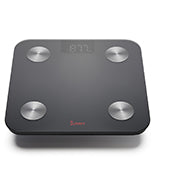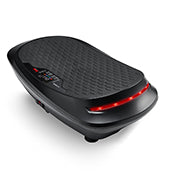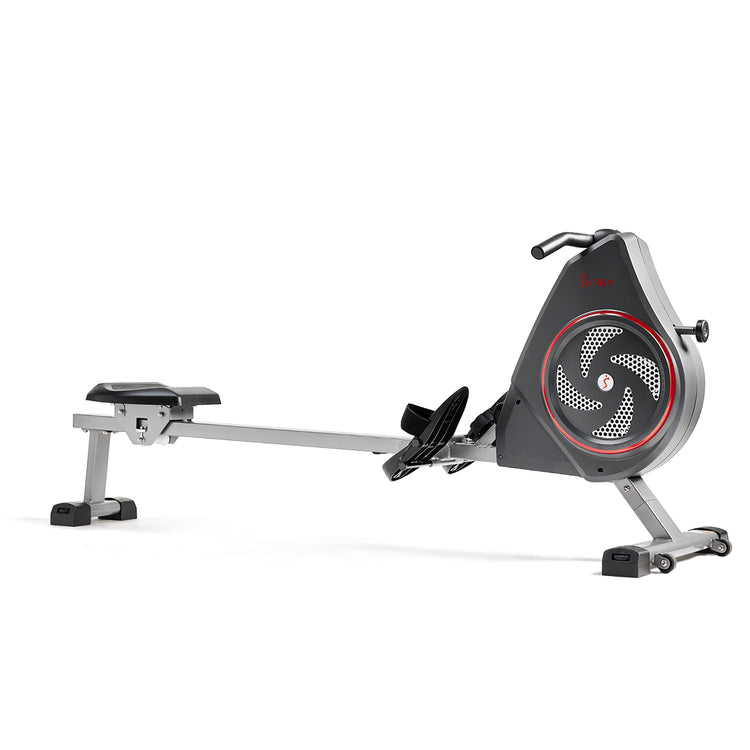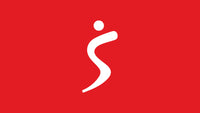When most people think of rowing machines, they imagine the classic model: a padded seat gliding smoothly back and forth on a rail, a single handlebar, and a linear pull that mimics the motion of rowing a boat. It’s a staple in gyms, basements, and HIIT classes for a reason.
But there’s another option quietly gaining traction in home fitness circles—the full-motion rower. And if you’ve never heard of it, you're not alone.
At first glance, a full-motion rower might look like a more complicated version of the traditional model, but that’s only half the story. The real difference lies in the movement pattern and the muscles it activates.
Whether you’re looking to spice up your home workouts, build balanced strength, or just want something new and engaging, understanding the difference between these two types of rowing machines can help you make the right choice for your fitness goals.
Let’s take a deeper dive into what separates full-motion rowers from standard rowers and why it could make a bigger difference in your workout routine than you think.
Meet the Machines: Full-Motion vs. Standard Rowers
Standard Rowers: The Familiar Favorite
Standard rowing machines—also known as fixed-handle rowers—use a single, horizontal bar or handle that you grip with both hands. This bar is connected to a resistance mechanism (often air, magnetic, water, or hydraulic), and as you row, you pull the bar directly toward your torso in a straight line. It’s simple, effective, and easy to learn, which makes it a go-to option for beginners and seasoned exercisers alike.
The biggest benefit of a standard rower is efficiency. You engage multiple major muscle groups in a fluid motion—legs, core, back, and arms all work together to create one powerful movement. But because both arms are fixed on the same handle, your stronger arm can (and often does) take over without you even realizing it. Over time, this can lead to imbalances in strength and muscle development.
Full-Motion Rowers: A Wider, Wilder Ride
Full-motion rowers flip the script. Instead of one shared handle, each arm gets its own, similar to using two oars on a rowboat. These independent handles allow each arm to move in a wide, circular path—much like the natural arc of real rowing strokes on water. This subtle change creates a completely different experience.
The wider range of motion forces you to stabilize with your core and move more through your shoulders and chest. In short, you’re still rowing—but now each arm is pulling its own weight. Literally.
Muscle Activation: What's Working Harder?
Both types of rowers target the core rowing muscle groups: legs, back, arms, and core. But full-motion rowers introduce some additional challenges thanks to their unique arm movement.
With the standard rower, the motion is mostly linear, so the work is concentrated on the posterior chain: glutes, hamstrings, lats, and biceps. That’s great for building power and improving posture, especially when combined with proper form.
Full-motion rowers, on the other hand, activate more of the shoulders, chest, and stabilizers. The deltoids and pectorals are recruited more during this motion due to the circular, outward arc of each arm. Your core also gets a serious upgrade in responsibility, since it must work overtime to stabilize your torso as your arms operate independently.
Think of it like the difference between a barbell bench press and dumbbell bench press. Both target the same general muscles, but the dumbbells require more coordination, balance, and engagement.
The Symmetry Advantage
One of the biggest benefits of a full-motion rower is what it does for muscle symmetry. Since each arm works independently, your dominant side can’t compensate for your weaker side. Not only does that help to balance out strength and muscle development over time, it can reduce the risk of overuse injuries.
This makes full-motion rowing especially appealing for athletes or exercisers who are rehabilitating an imbalance or just want to move more mindfully and evenly.
Which One Gives a Better Full-Body Workout?
The good news: both rowers provide excellent full-body workouts. Rowing is one of the rare cardio exercises that uses both the upper and lower body, making it incredibly efficient.
Whether you're on a full-motion or standard rower, you’ll work the legs during the drive, the back and arms during the pull, and the core throughout.
That said, the full-motion rower expands the range of motion, particularly through the shoulders and chest. This doesn’t necessarily mean you’ll build more muscle or burn significantly more calories (we’ll get to that in a minute), but it does mean your body is moving in a more complex and varied pattern.
And in fitness, variety is often the secret ingredient to better results.
Calorie Burn: Is There a Real Difference?
Let’s talk numbers. Many people choose rowing machines for their ability to torch calories while building strength—and rightly so. A 30-minute rowing session can burn anywhere from 200 to 400 calories depending on your weight, resistance level, and intensity.
But does one machine burn more calories than the other? Technically, no.
Because both rowers engage the same major muscle groups, the overall calorie burn is similar. That said, the full-motion rower may feel slightly more intense due to its more dynamic motion and increased demand for coordination and core stability.
In practice, this could lead to a slight uptick in effort—and thus, calorie burn—but the difference isn’t large enough to make full-motion rowing a calorie-burning game changer. It might just feel that way because your muscles are being challenged in new ways.
If You’re New to Rowing, Where Should You Start?
For new users, standard rowers offer a gentler learning curve. The movement is more intuitive, and because both arms move in unison, there's less coordination required. You can focus on form, breathing, and building endurance without having to worry about whether one arm is lagging behind the other.
If you're new to rowing or just starting a fitness routine, a standard rower is an ideal place to begin. It's straightforward, effective, and easy to use right out of the box.
Full-motion rowers require a bit more body awareness and control. Since each arm moves independently, coordination and balance become more important. It’s not that it’s hard—it’s just more nuanced. Think of it as the difference between walking on a flat sidewalk versus navigating a hiking trail.
This doesn’t mean beginners can’t use a full-motion rower. It just means there might be a short adjustment period, especially if you're not used to moving each side of your body independently in a rhythmic, controlled manner.
If you’re up for a challenge and want to improve your coordination and core engagement from the start, you might enjoy learning on a full-motion rower. But if you're looking for something easier to master right away, stick with the standard version to build confidence and strength first.
The Final Verdict: Which Should You Choose?
So, is one better than the other?
The truth is, neither is inherently better—they’re just different tools for different needs. Not to mention, the SunnyFit app has plenty of beginner friendly workouts for both types of rowing machines.
However, a few things you might want to consider include:
- If you’re just starting out, want a no-fuss cardio machine, or prefer a more straightforward workout: Go with a standard rower.
- If you’re looking to improve muscular balance, enhance coordination, and challenge your body in new ways: Try a full-motion rower.
If you have space, budget, and the curiosity to try both, rotating between them could be an amazing way to vary your routine while still reaping the benefits of a low-impact, full-body workout.
One Stroke at a Time
When it comes to fitness, the best choice is always the one you’ll stick with consistently.
Whether you're gliding through a standard rower workout or powering through a full-motion session, the benefits of rowing—improved cardiovascular health, full-body muscle engagement, low-impact movement—are all yours.
So, the next time you’re considering a rowing machine, remember it's not just about how it looks or how hard it makes you sweat. It's about how it moves you, inside and out. And with either rowing option, you’re on the right path—one powerful pull at a time.
Ready to start your rowing journey? Explore the various Sunny Health & Fitness rowers now!































Add Your Name & Email
Please enter your name and email to continue.We won’t display your email publicly.